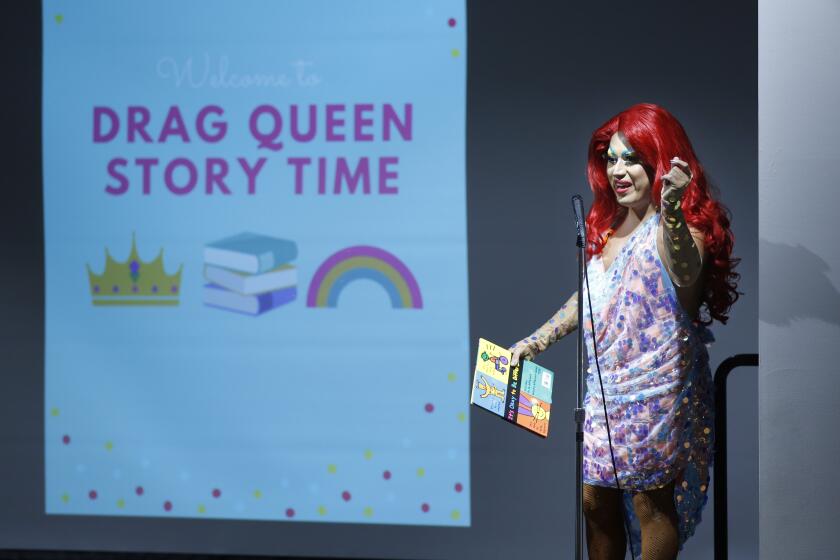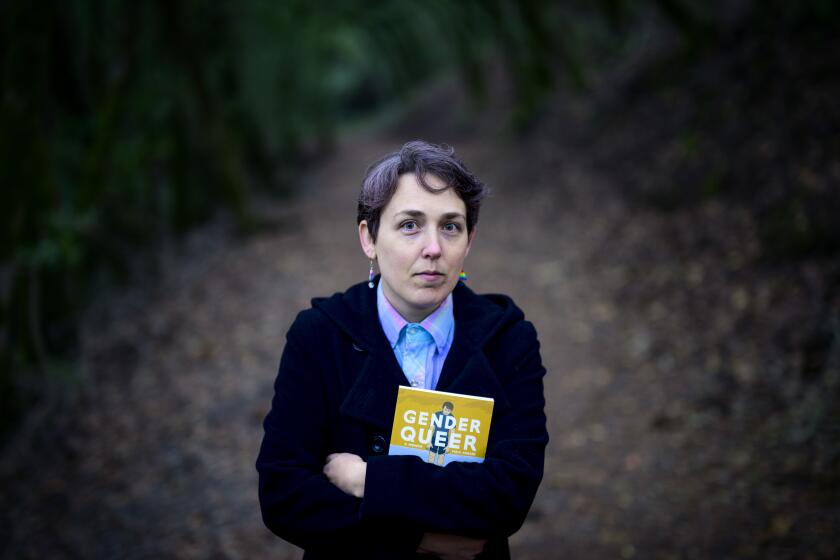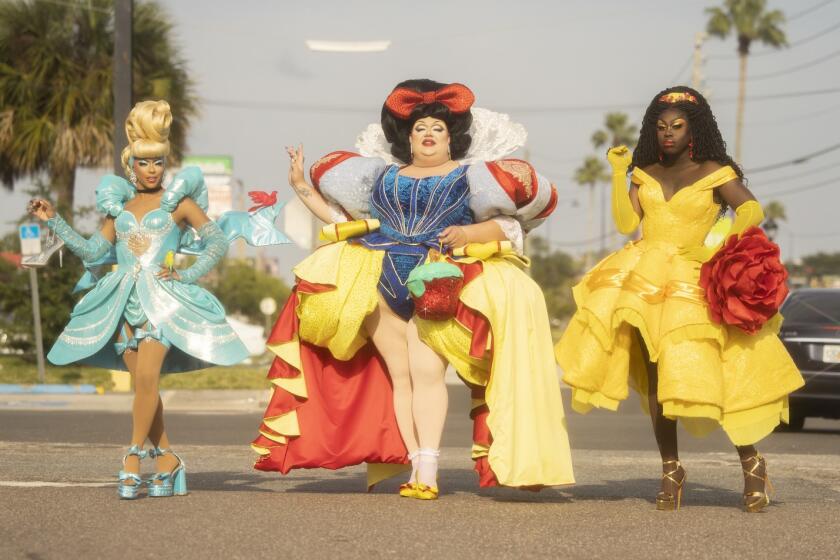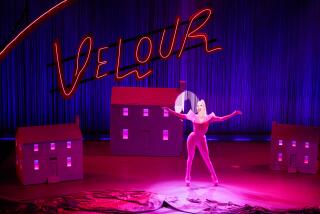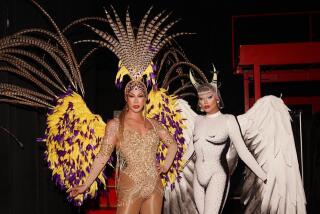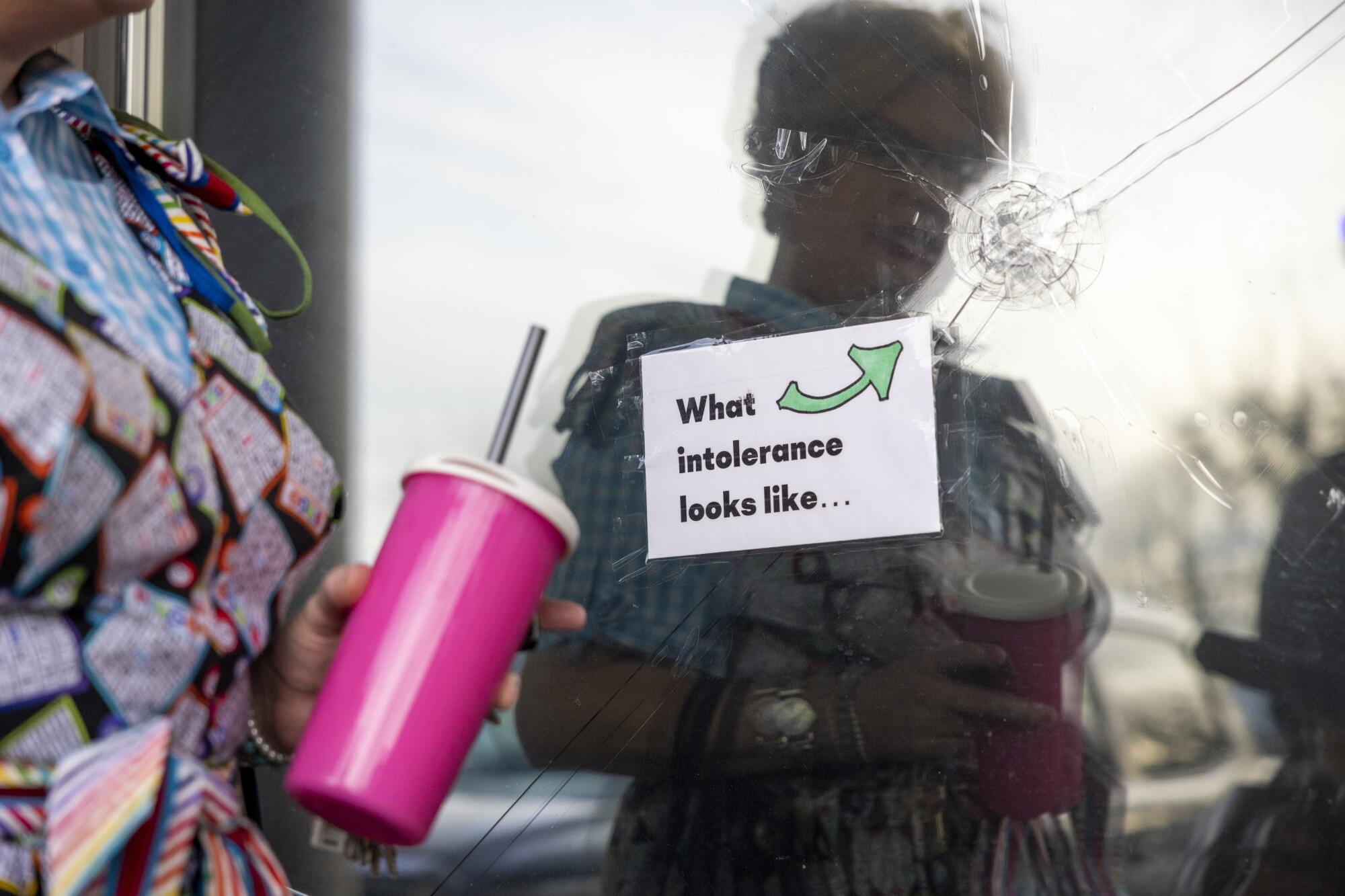
RENTON, Wash. — Late on a Saturday afternoon last month, a gaggle of children, ages 1 to 5, trickled onto a patio next to a bar, sat in tiny plastic chairs and waited for a host who was about to launch a singalong to the tune of “If You’re Happy and You Know It.”
Their parents and grandparents stood nearby at the Brewmaster’s Taproom, the site of a monthly event that has become a center of celebration — and controversy — in Renton, Wash., an otherwise quiet Seattle suburb best known for its Boeing factory.
After kicking off her presentation with books about Santa and snowball fights, Sylvia O’Stayformore led the song with a shout: “If you’re a drag queen and you know it, blow a kiss!”
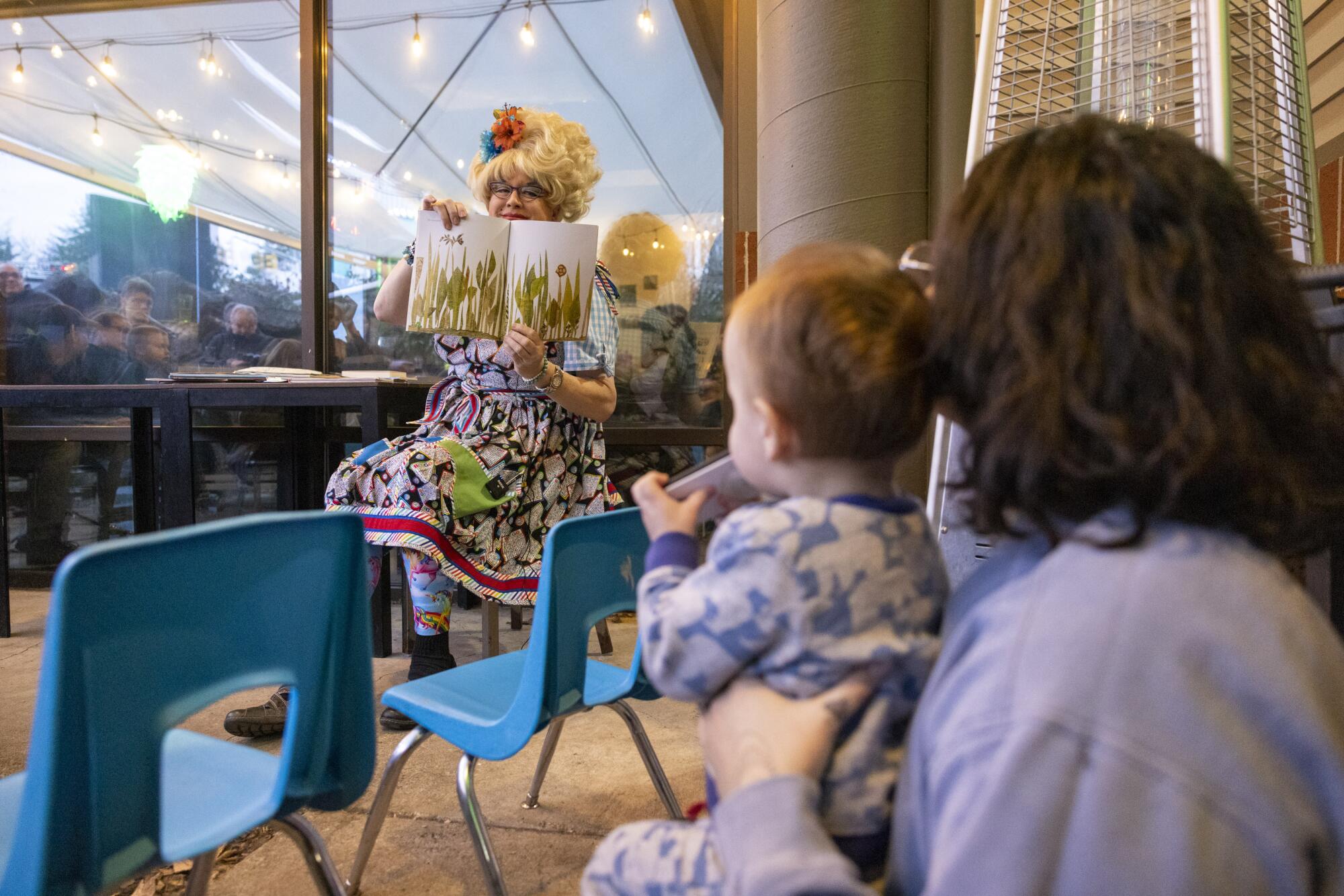
“Muah,” the kids replied, as they mimicked the adults, smacking their lips and blowing across their palms.
O’Stayformore has been leading drag queen story hours here for more than a year, with few glitches. But on this Saturday, attendees were greeted with a slash of tape covering a hole in the window next to the bar’s front door, a reminder that someone had shot up the pub — empty at the time — weeks before. In addition, there were cameras in place in the parking lot, a level of security previously unknown at the quiet strip mall where the Taproom is located.
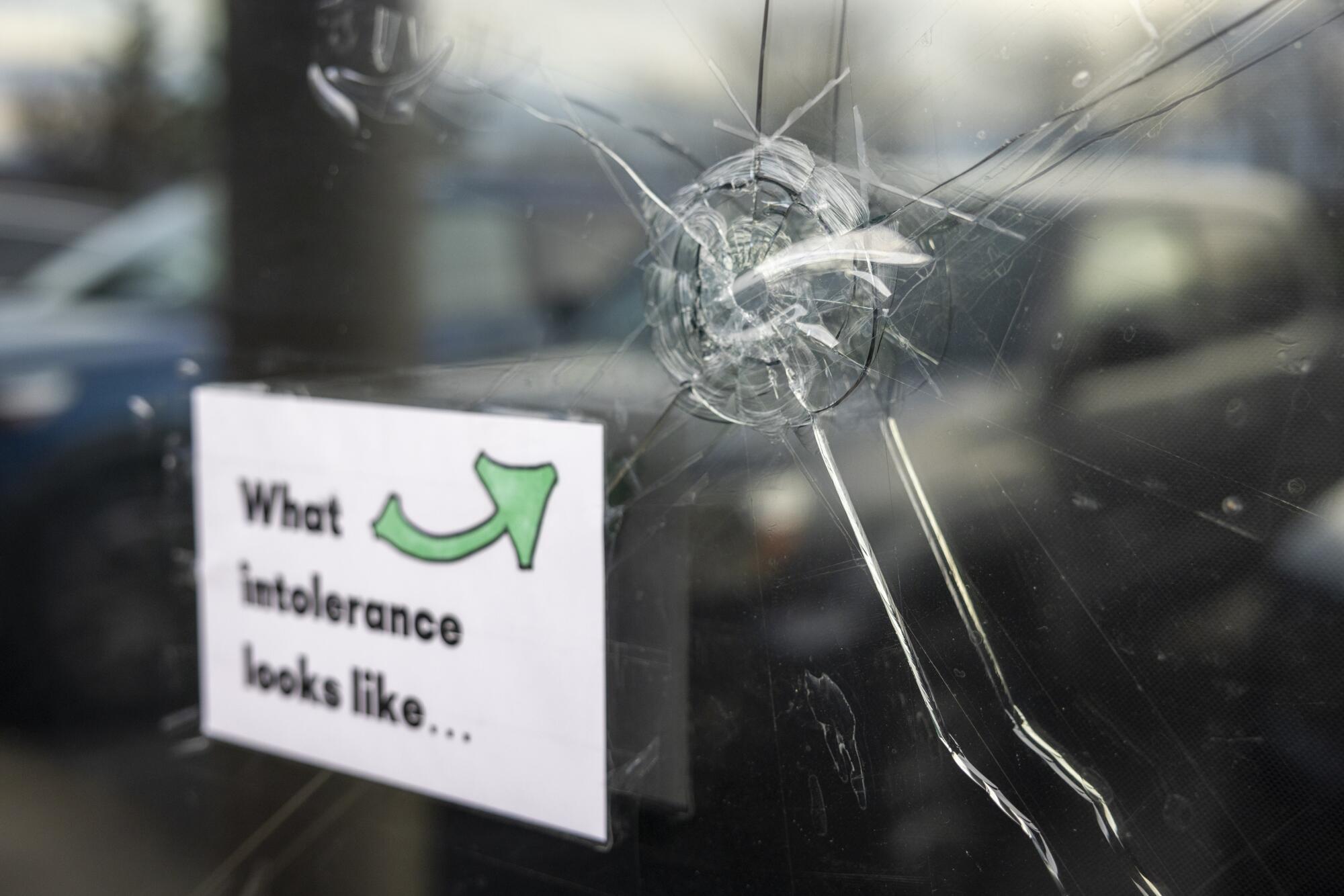
“What do they hate so much about reading to kids?” O’Stayformore asked before the reading. “What’s so bad?”
Over the last two years, drag story hours — featuring men who dress as caricatures of women — have expanded into libraries, bars and schools in almost every state. Some of the story times feature drag kings, or women performing as men. The books range from run-of-the-mill children’s titles to those with LGBTQ themes, like “Santa’s Husband” and “If You’re a Drag Queen and You Know It,” written by a performer named Lil Miss Hot Mess.
But the story hours are increasingly attracting the attention and ire of right-wing extremists and conservative parents and politicians, some of whom insist that the events appeal to pedophiles. Armed Proud Boys members have stormed productions in San Francisco and New York. Recent threats of protest and violence resulted in cancellations at an elementary school in Columbus, Ohio, and a LGBTQ center in Orlando, Fla. According to the advocacy group GLAAD, there were 141 protests and attacks on drag events last year nationwide — most of them against story hours or brunches.
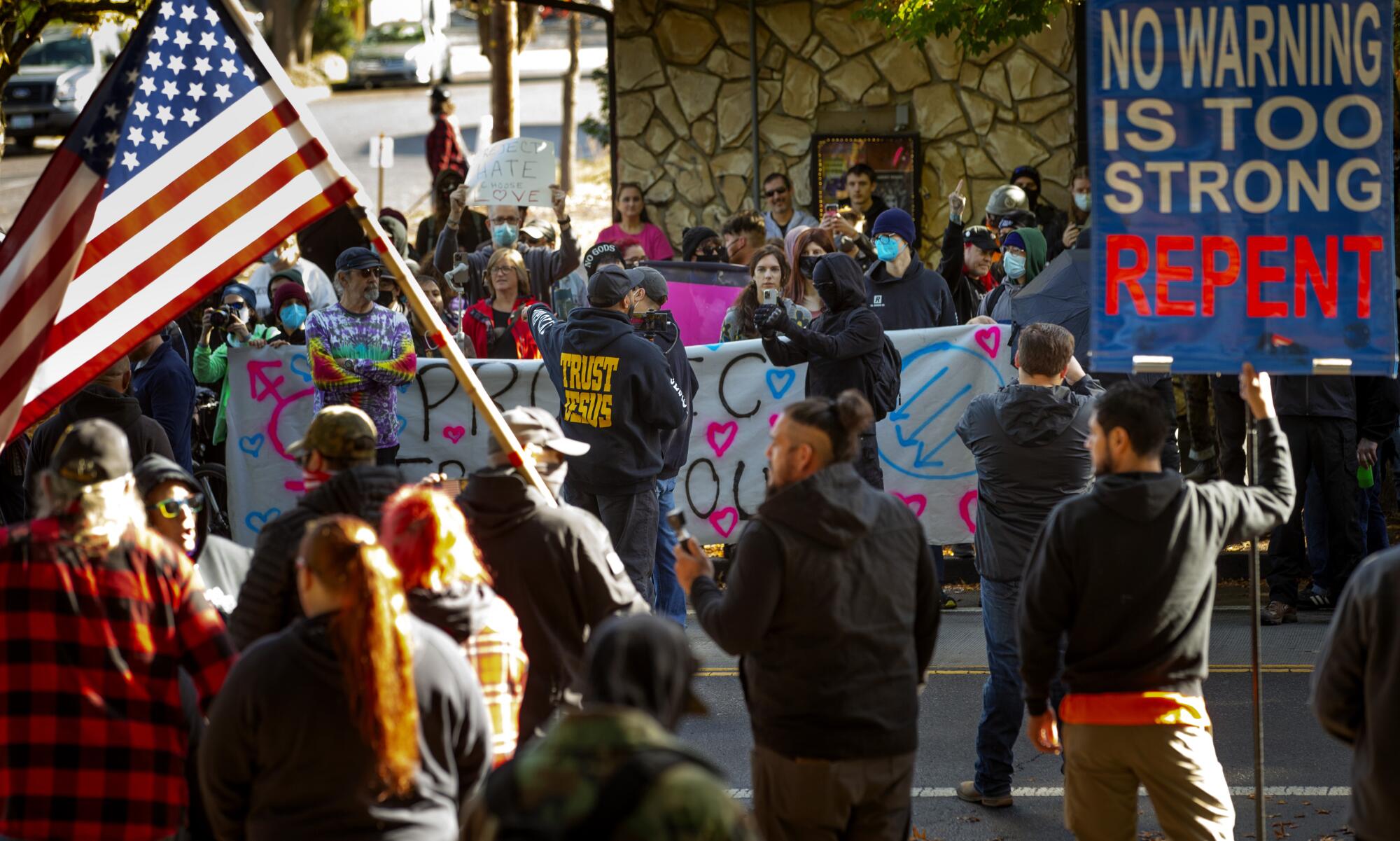
Lawmakers in 14 states, including Nebraska, North Dakota, South Carolina and Texas, have proposed laws to outlaw drag in public or at businesses that admit people under 18. In Tennessee, proposed legislation could require places with “male or female impersonators who provide entertainment that appeals to a prurient interest” to register as strip clubs.
The backlash comes at a time of positive developments for LGBTQ communities. According to a Gallup poll, support of same-sex marriage is at a high of 71%. Congress recently passed a bipartisan bill that codified same-sex marriage into federal law. Drag performers and transgender icons are now familiar faces in TV, film and music, and polls indicate that a growing number of Americans say they know someone who is transgender or uses gender-neutral pronouns.
Even so, dozens of bills have been proposed this year on the state level to restrict the ability of transgender people to update their IDs, use bathrooms, join sports teams or receive medical care that aligns with their gender.
For the drag queens next door — many of whom grew up closeted, started their careers at seedy bars and now relish the chance to be onstage in bookstores and coffee shops — it can feel like the clock has been turned back to an earlier era. For their opponents, the growth of drag is another chapter in a battle between so-called traditional Americans and what conservatives deride as the “woke left.”
O’Stayformore wants nothing to do with any of that. She just wants to read books to kids.
Her look — a beehive blonde wig, arched eyebrows, black-rimmed glasses, heavy caked-on makeup, bright red lipstick and a teacher’s smock printed with a pattern of rainbow bingo boards — suggests eccentric 1960s librarian meets Ms. Frizzle. It’s an aesthetic she’s perfected over 30 years of donning drag.
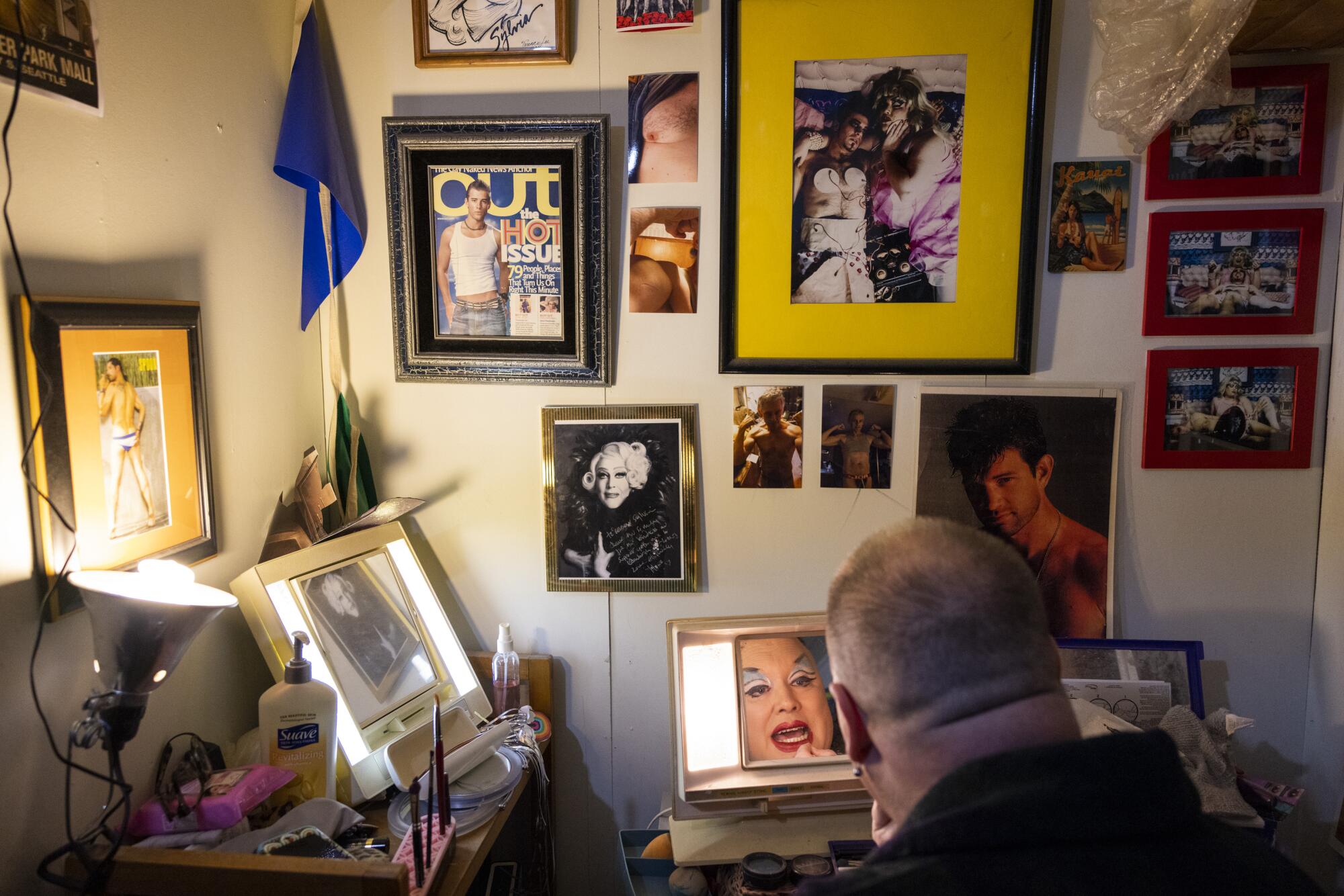
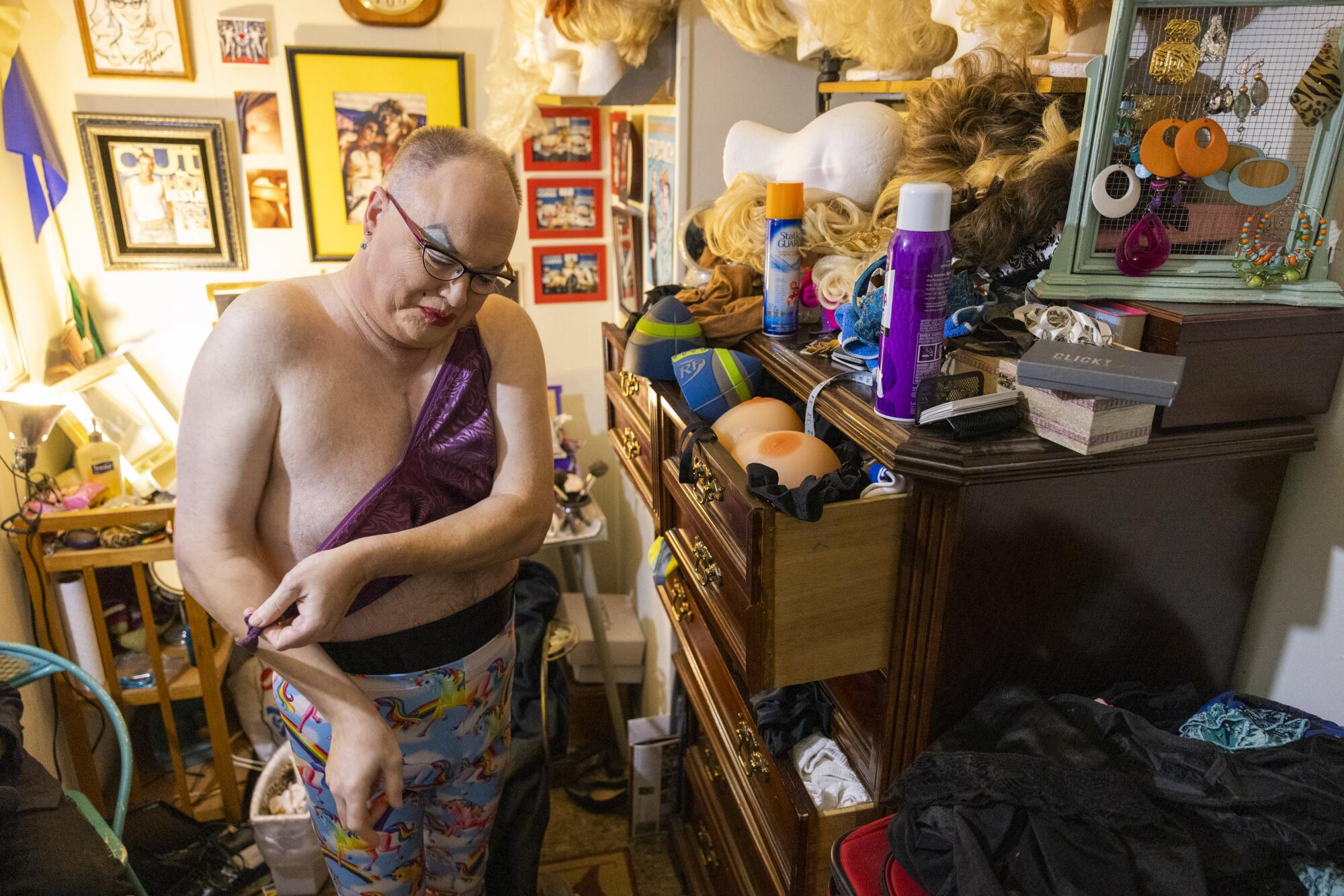
Growing up in a Mormon community in Logan, Utah, O’Stayformore, who goes by Benjimen Blair when not performing, remained closeted until she was 21. It “would have been a dream” to have drag story hours when she was a kid, she said, adding that it “would have helped me so much to be myself. So I’m trying to give that to other kids, whether they grow up to be gay or transgender or not.”
She’s been a regular host on Seattle’s drag bingo circuit for more than a decade, performing at senior centers and wine bars up to three nights a week. During the day, she works as a “senior sidekick,” helping clients run errands, take medication and go on walks. She started her sidekick business after leaving a job as an activities coordinator at a senior living facility.
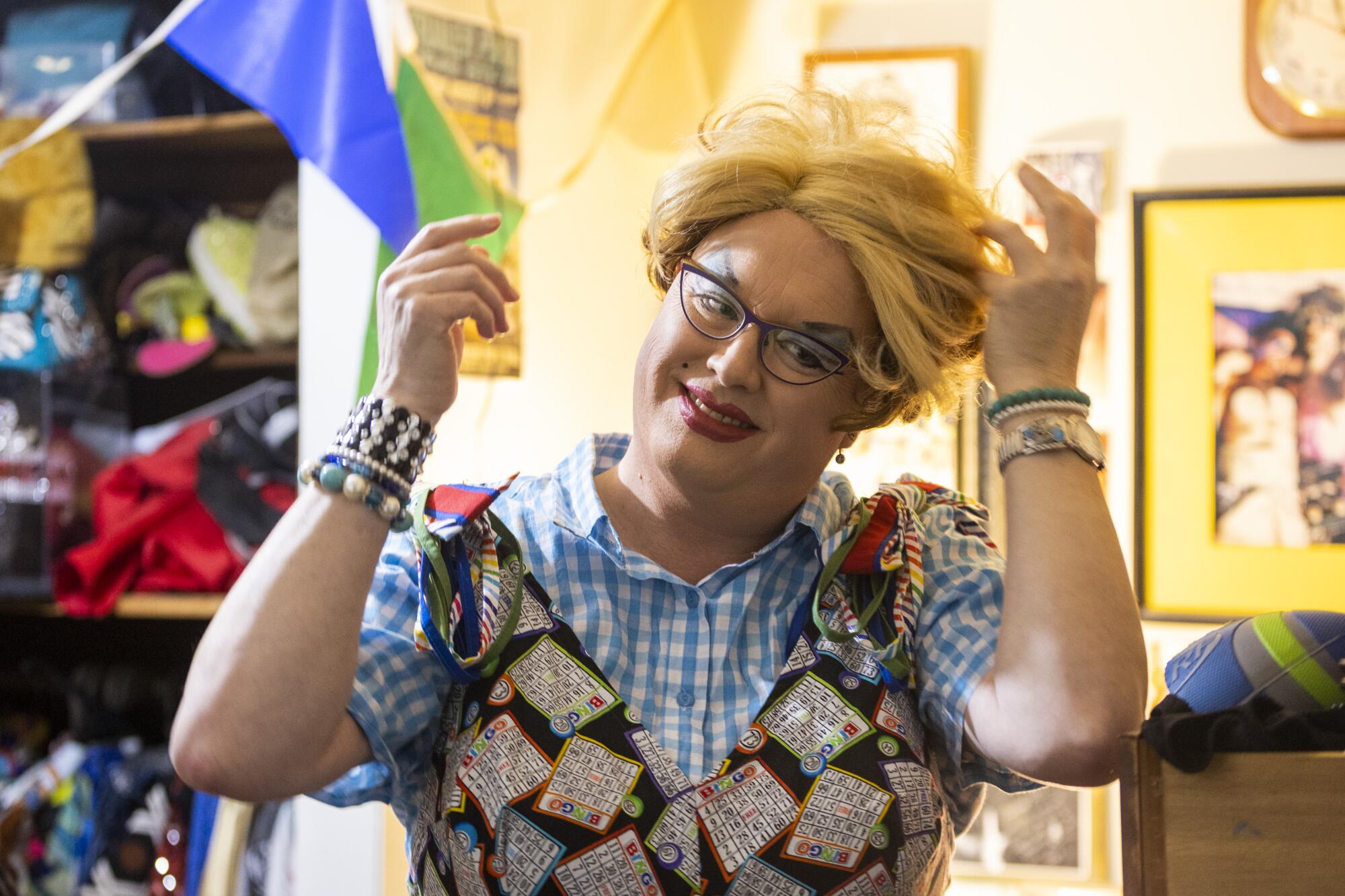
And for the last year and a half, O’Stayformore, 55, has been doing monthly story hours for children at the Brewmaster’s Taproom.
“I’m becoming a woman of a certain age when it comes to performing at clubs,” O’Stayformore said. “Bingos, story hours? Those are much more my pace and time of day, honey.”
During the recent story hour at the Taproom, O’Stayformore read “The Lipstick,” a colorful 2021 book by Laura Dockrill in which a boy finds his mom’s lipstick and applies it before using it to draw on the walls. His mother insists that he clean all the red streaks — except for those on his face, “where lipstick belongs.” O’Stayformore also read “The Snowy Day,” a classic 1962 book by Ezra Jack Keats, about the adventures of a boy named Peter as he builds a snowman, makes a snow angel and brings home a snowball that promptly melts in his coat pocket.
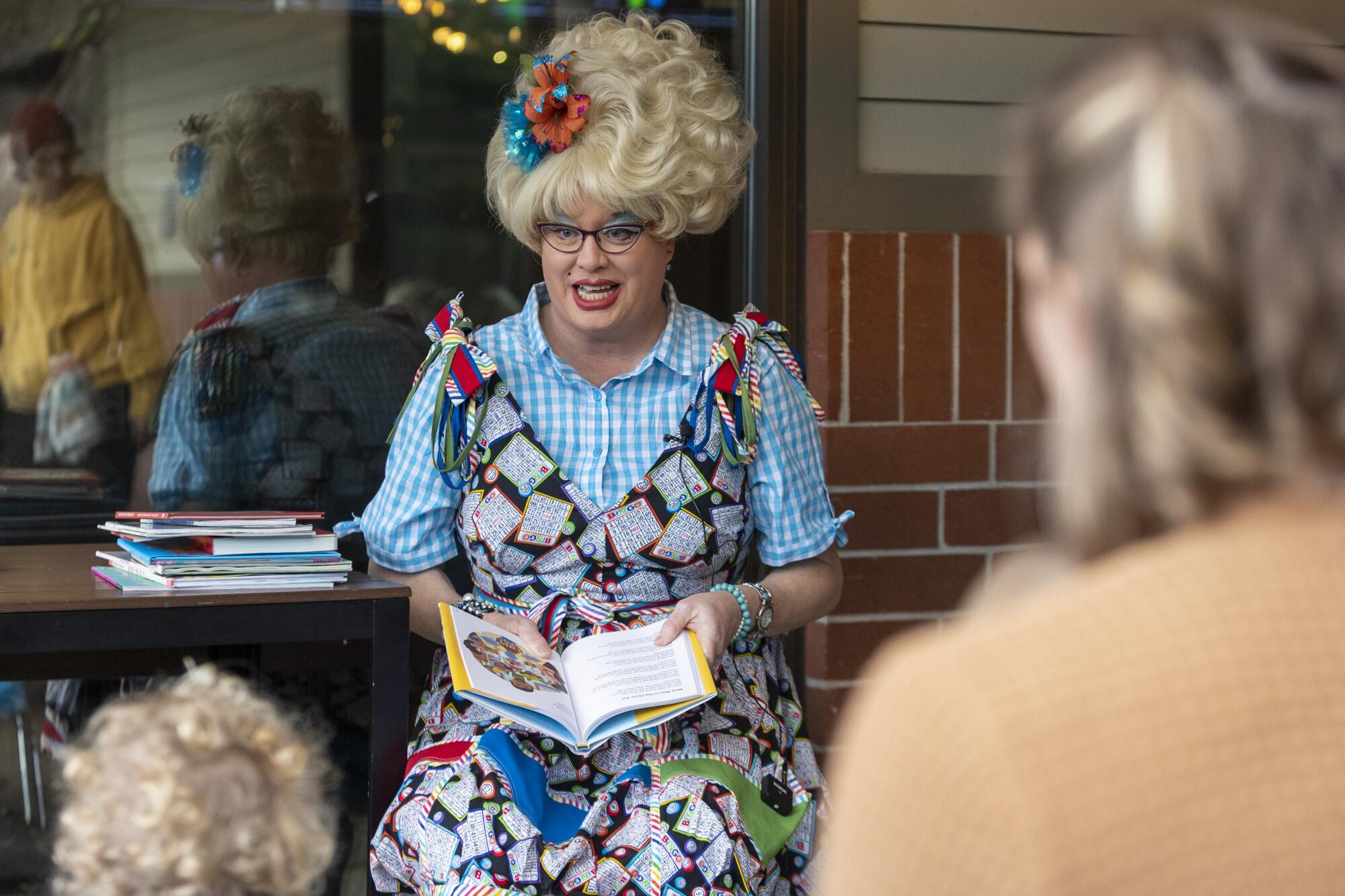
Toni Bader, 44, and her wife, Alex LaRosa, 37, used to go to drag shows before they had kids, and they wanted to experience the story hour at the Taproom after they watched a local news report on the shooting at the bar. They brought Gabi, 1, and 3-year-old Gio.
“Gio has a flamenco dress he likes to wear,” said LaRosa, who lives with her family in Seattle. “He’s gotten into lipstick. So we want him to see things like this and know it’s totally fine.”
Maile Murphy was there with her 1½-year-old son, Briar. “We go to story time in Tacoma where we live, but it’s just some lady who reads,” said Murphy, 28, who was joined by her husband and dad. “This one is more fun, it’s more inclusive. For us, it’s about education, about diversity and supporting a local queen.”
The gathering also attracted critics.
Drag performers are more visible than ever after decades in the underground, but will recent protests, threats of violence and restrictive laws set them back?
During a Facebook livestream of the event, someone scrawled: “Look at all the parents who can’t even be bothered to read to their own kids.”
Emails, many of them hostile, poured into the bar’s inbox before and after the get-together.
“When I was a girl in the 60s, we weren’t even allowed to SAY the Q-word (queer)! Our parents loved us and did not want us to know what that word meant!” wrote Cindy Bin, who described herself as a grandmother in Illinois. “Now the schools are pushing this onto school children, and bars like yours hold ‘drag queen story hours’ for KIDS?? What is WRONG with you??”
A small LGBTQ group formed to protest story hours and all-ages drag shows also chimed in. Gays Against Groomers, which launched last year, has a few dozen representatives in several states who appear on radio and TV to speak out against drag story events.
Three months ago, 29-year-old trucker Alexandra Chrostowski volunteered to represent the organization in Washington state after she objected to the sex education curriculum in her kids’ schools.
“I’m a gay woman and I’m being called homophobic for being against this,” said Chrostowski, who is married to a woman and has three middle-school-aged children. “I’ve been to a lot of drag shows. I appreciate them. But why do you want to dress men up in women’s clothing in front of kids?
Maia Kobabe’s graphic memoir “Gender Queer” became the most banned book in American schools, drawing the Northern California artist and writer into the nation’s cultural wars.
“I don’t have a problem saying the word ‘normal,’” she said. But “being gay or a drag queen is statistically not the norm. So then you are trying to read books on gender ideology to kids and get them to view the world in this radically new way, concepts that would not have been mainstream until recently.
“Isn’t there something a little off about that? On one hand we act like kids are incredibly naive to drag queens around them. On the other hand, we are taking away their innocence. So when we say ‘grooming,’ we mean normalizing talking about gender ideology and sex in the minds of children.”
Chrostowski, who lives near the Oregon border, didn’t attend O’Stayformore’s recent reading. But she said she plans to attend an upcoming story hour in Renton to quietly observe — without her kids.
Drag queen story hours started about seven years ago in San Francisco when Michelle Tea, a queer author, artist and new mother, couldn’t find any kid-friendly book readings for LGBTQ parents.
Tea joined two colleagues from a queer arts organization, Julián Delgado Lopera and Virgie Tovar, to launch the first drag story hour at the Harvey Milk Memorial Branch Library, named after the pioneering gay activist and San Francisco supervisor who was assassinated in 1978. A drag queen called Per Sia read in front of a crowd of mostly LGBTQ parents and their kids. There were no protests or violence.
The reading inspired others to launch their own story events. Drag Story Hour, a New York-based nonprofit that manages many of the events across the country, listed dozens on its online calendar last year. Today, there are regular story hours in West Hollywood, Eagle Rock and Santa Monica, among other areas in L.A. County.
“It’s like the Muppets,” said Tea, who is 51 and now lives in Glendale. “Kids love it because it’s wildly imaginative. And adults love it for the same reason. It’s also gotten a lot more straight. It’s mostly straight couples now who bring their kids.”
The negative reaction to drag queens, Tea said, “is no different than the obsession the right has with critical race studies or ‘The 1619 Project’ or anything that’s not about white, heterosexual men.
“They don’t want queer people to understand our beautiful history,” she continued. “And all this talk of grooming? Kids are now traumatized by having to even learn that word because of the Proud Boys shouting it at them when they storm these story hours.”
Nine GOP-led state legislatures are considering restricting or even criminalizing drag shows. It’s Gay Pride versus the Proud Boys.
Fox News has regularly weighed in. Tucker Carlson recently said that drag queen story hours “indoctrinate and sexualize children.”
The story times have also become regular fodder on Libs of TikTok, an influential conservative Twitter account that mocks what it sees as political correctness run amok among liberals while painting a picture of dangerous cultural storms sweeping over the nation.
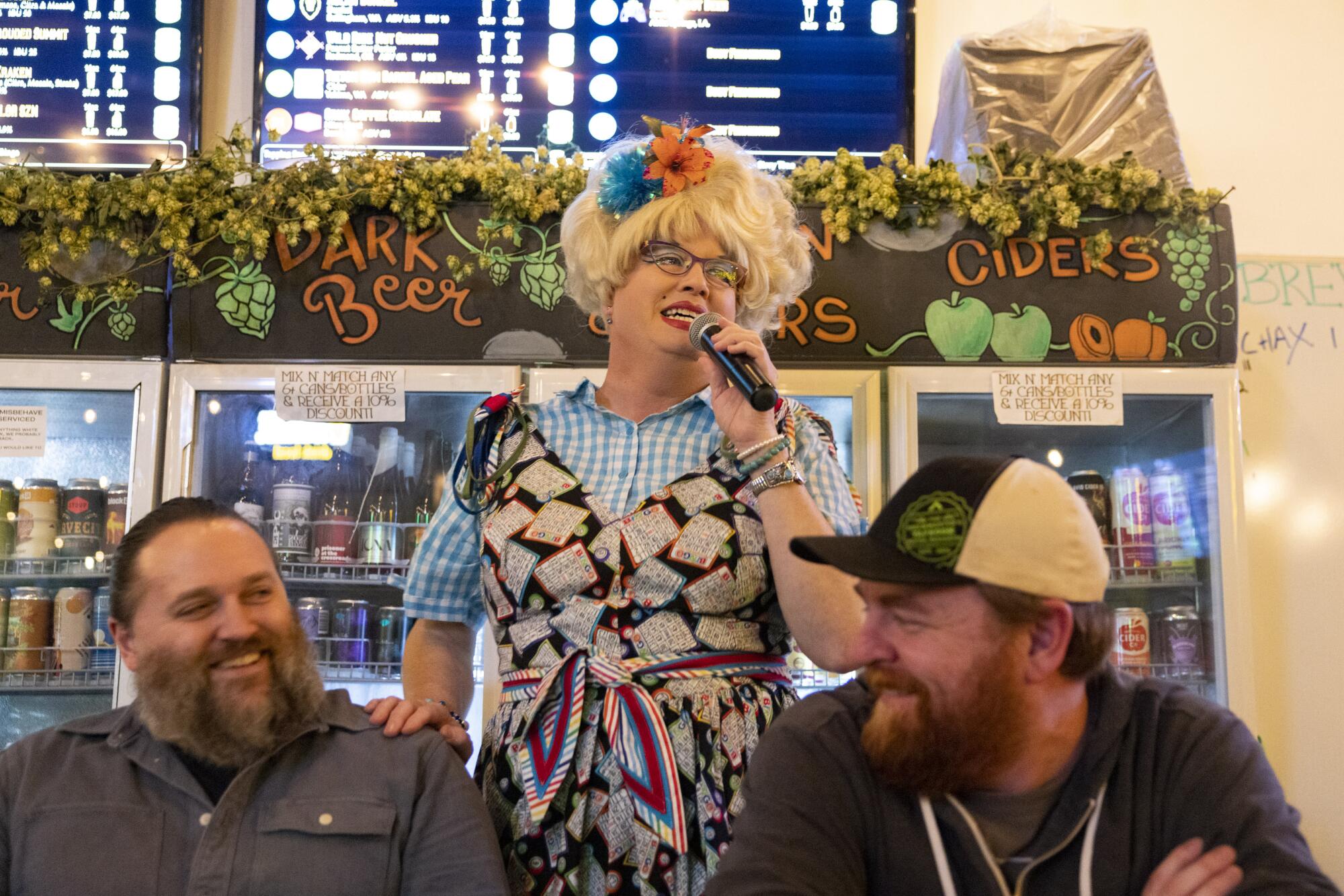
In 2019, a drag story hour launched at a library in Fairwood, a community outside Renton, that featured a different drag queen. Armed members of the right-wing groups the Three Percenters and the Proud Boys showed up, while media outlets questioned if such an event should happen in a space supported by tax dollars.
It was short-lived, but in 2021, the privately owned Brewmaster’s Taproom launched a new story hour with O’Stayformore at the helm. She relished the opportunity to take a stand and pick books that she believes are appropriate for children.
“You’re making these blanket statements that drag queens are pedophiles when the reality [is that] the pedophiles are the people who look like your husbands,” she said. “We’re not necessarily children-likers. I’m not a huge kid lover in any way. I am just easily approachable and a performer. I can read books.
“I do my naughty shows at night at bars. I have shirtless men, go-go boys, a stage stud who comes up and inappropriately is grabbed by us. Kids don’t come,” said O’Stayformore, who has gradually shifted many of her gigs to early evening bingos and the monthly story hours in order to have a better work-life balance.
She recently considered the possibility of launching story hours across Seattle and recruiting drag queens to read. Branching out and building a stable of performers would allow her to sit down a little more. She’d get home at a reasonable hour.
But a friend who is also a drag performer discouraged her. “Could you trust anybody but yourself to do it correctly?” she asked. “We don’t need to give them any more fodder against us.”
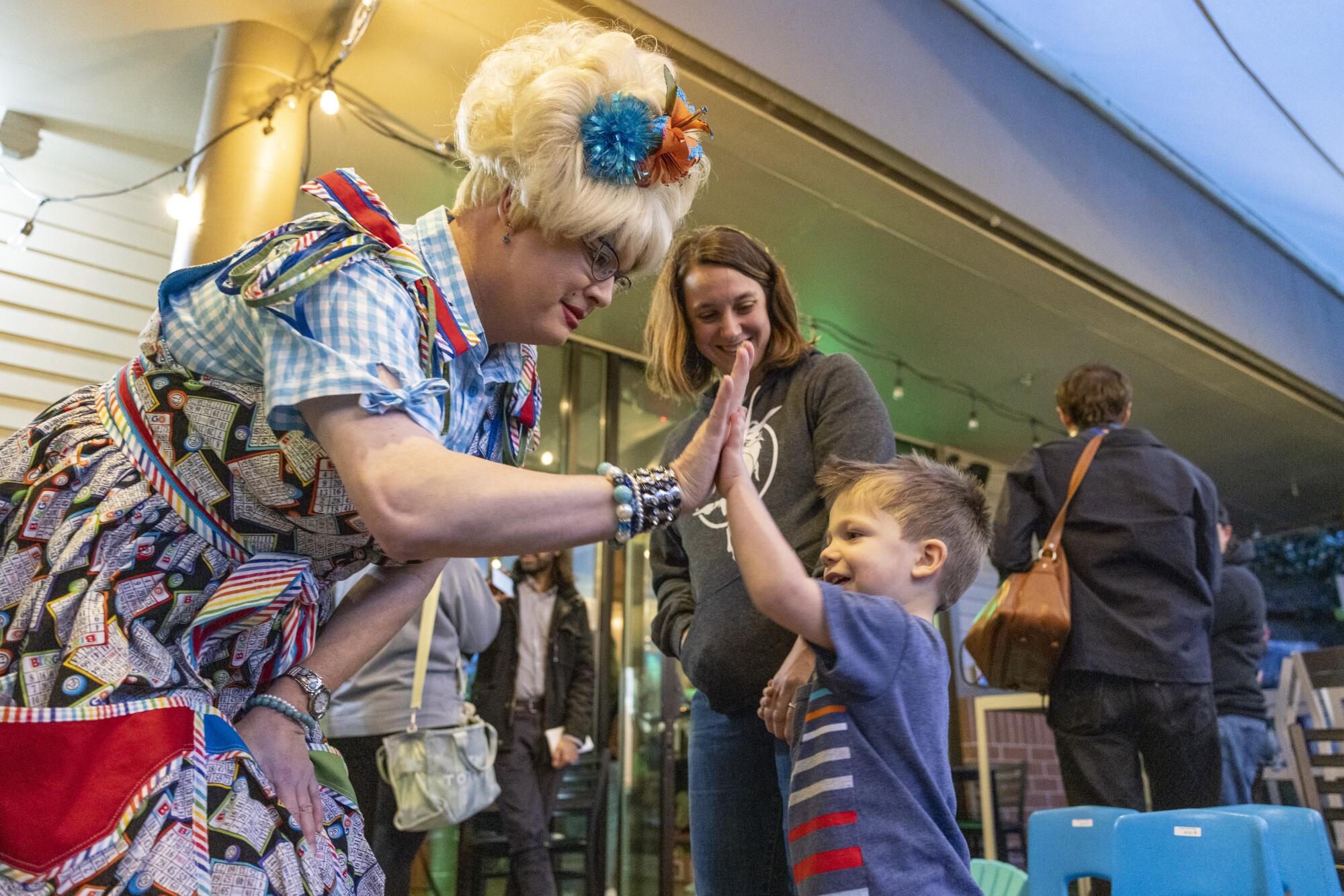
O’Stayformore took a long look at what she already had going. Her drag career was flourishing, with regular bookings each week. She was earning $400 for five to six hours of work performing at a story hour and a bingo night for adults. Expansion, she concluded, wasn’t worth the risk.
She’d already been pulled into a culture war she didn’t want to be a part of — and didn’t want to end up further on the front lines.
More to Read
Sign up for Essential California
The most important California stories and recommendations in your inbox every morning.
You may occasionally receive promotional content from the Los Angeles Times.

